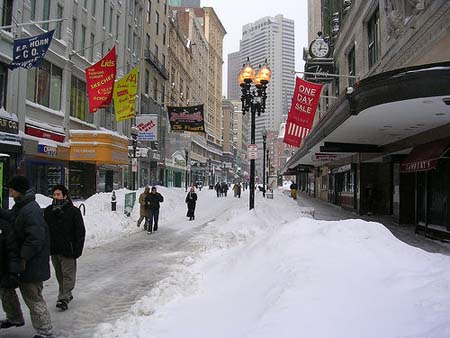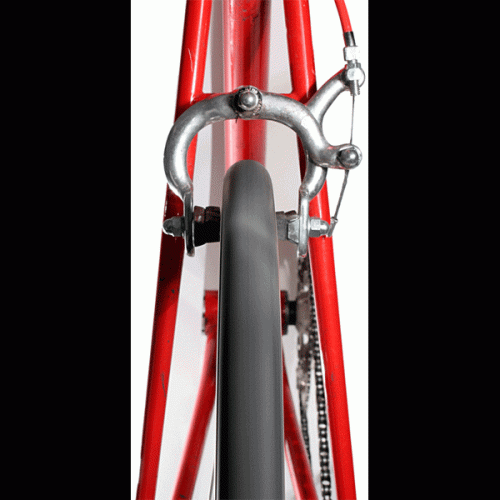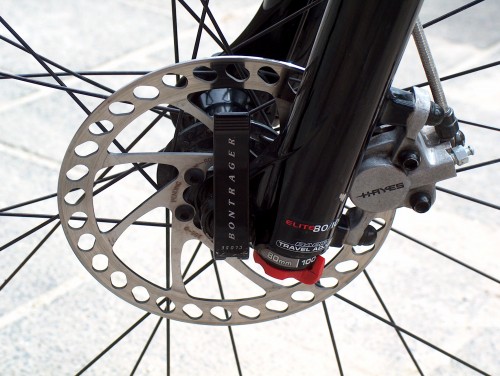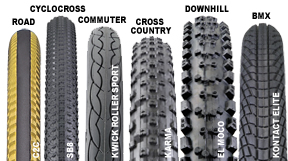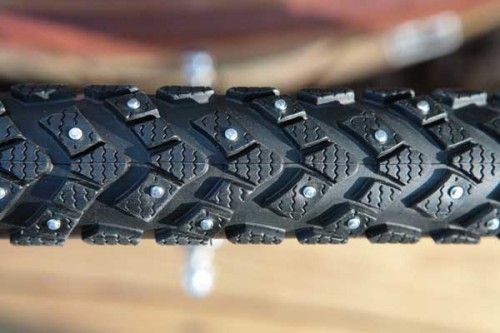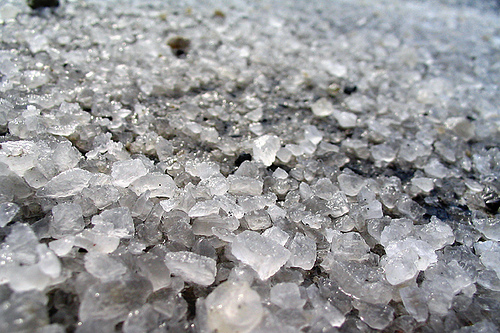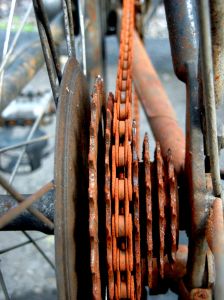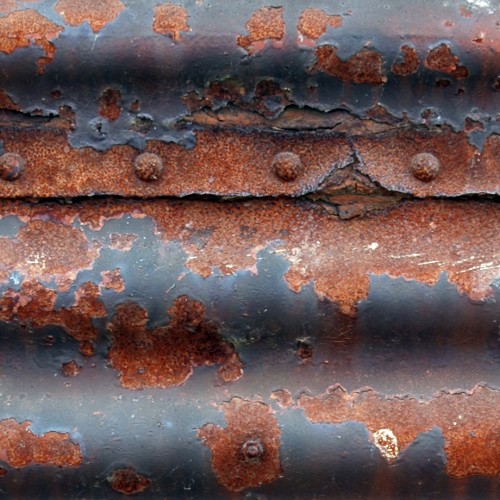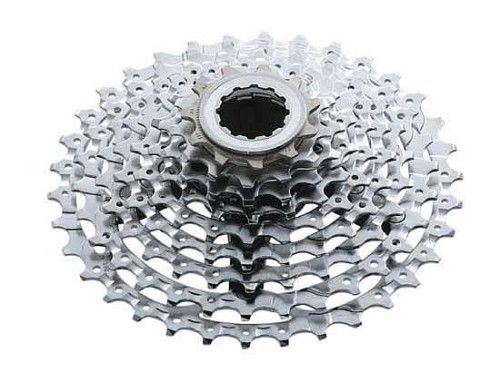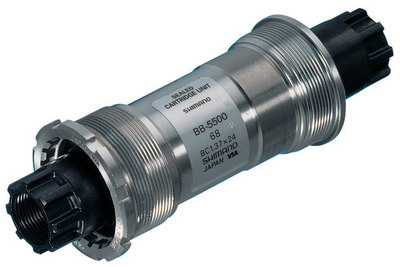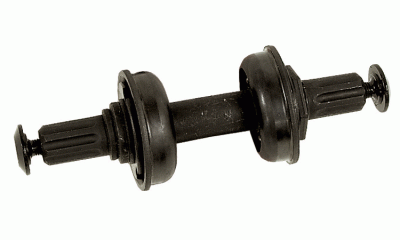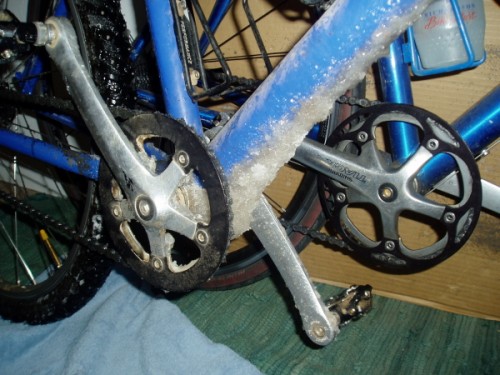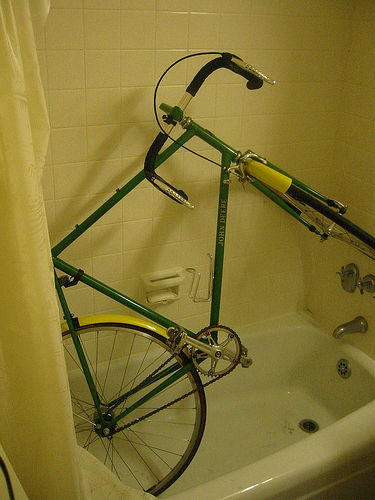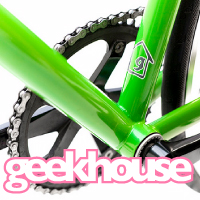The Latest From BostonBiker.org
News, Events, Updates
Still Better Than The Bus: Open Thread
Written by Boston Biker on Feb 13Good lord the roads are proper shit today. Layers of ice and slush and lots and lots of rump braille snow. I went slow, and steady, and rode straight upright and didn’t have any problems with slipping, but damn it was a bit nerve wracking on the hills. It was grade A gross. But you know what, even crawling at half speed, even though my toes were a little wet, and even though it was super putrid out, it WAS STILL BETTER THAN TAKING THE BUS!
It wasn’t that cold, it wasn’t that nasty, and I got home only 10 minutes slower than normal.
I saw other cyclists, and I saw evidence of their trails, so I know I wasn’t the only yahoo out there today, share your adventures below.
Tags: but in ice, ice, nasty out, snow, the world will not end in fire
Posted in bostonbiker, Commuting | Comments Off on Still Better Than The Bus: Open Thread
A Public Service Announcement For Pedestrians On The Bike Path
Written by Boston Biker on Feb 12Before I get to my PSA let me regale you with a story. The southwest corridor was a black ice nightmare today, thanks to warm air temps and cold ground temps the entire thing was one big sheet of super slick black ice. No one has cleared out the sidewalk adjacent to the bike path so pedestrians were sharing the bike side with cyclists (of which there were many).

Enter our main player, one ADORABLE child. I am talking clothing catalog cute, precocious and fun. She was enjoying the warm air and scampering all over the path, something her absentminded mother seemed to have no problem with. She just so happened to be playing on a large sheet of black ice.
There were two cyclists ahead of me, the first a young lady on a mountain bike had been traveling slowly and carefully to avoid falling on the black ice. When she saw this child basically jumping out in front of her the force of her brakes being applied immediately and violently dumped her onto the path. This caused the young man behind her to do the exact same thing.
The had both been traveling very slowly, but that ice was slippery. When I saw them both go down I immediately began to back pedal (one of the many benefits of riding a fixed gear in the snow) to slow myself gently, but it wasn’t going to be enough. I jumped off my bike putting both feet on the very slick ground, but sadly kept sliding forward. I came to a stop inches from the guys head. (I felt like the guy from premium rush when he slides under the truck)
The child thought the whole thing was great fun. Everyone got up dusted themselves off and continued on their way. No one was really hurt, but its still not fun to crash your bike, and its no fun thinking you might injure a cute little child.
Which brings me to my PSA.
Dear Pedestrians:
You are sharing the bike lane with the cyclists. In the same way you don’t like it when cyclists ride on the sidewalk, we don’t particularly like it when you walk in the bike lane. But because of the snow, we are willing to share.
Some things you should know:
1. Its much easier for you to move laterally than it is for us. Especially on ice. So if you can move over when you see us coming, please do so.
2. Quick corrections are impossible while riding a bicycle on ice. If you see us coming, get over early, and stay over letting cyclists know you are not going to be in their way, and giving them time to correct their course around you.
3. Stay on one side of the path. Depending on ice conditions it can be very hard to alter our course while riding. If you stay on one side it gives us a predictable path to pilot around you. Even if you don’t see us behind you it will allow us to safely pass.
4. Remember you are not on the side walk, keep alert, with your head up and free of the distractions of texting while walking.
5. Once the snow is gone, could you please move back over to the pedestrian side of the path. Thanks.
6. And please for the love of all things cute and cuddly, keep your child close to you and don’t let them run around causing accidents like cute little bundles of chaotic evil.
Tags: chaos on the bike path, crash, cute kids, ice
Posted in advocacy, Commuting | 7 Comments »
Snow Warning
Written by Boston Biker on Dec 20The entire city seems to be in gridlock right now (unless you are on a bike that is), lots of ice, lots of poor driving, if you don’t have to ride right now, don’t. If you are going to ride, be super careful, everyone seems to have forgotten what snow is, and is predictably driving like crazy people.
Its an excellent day to practice your “have a lot of lights, and go real slow” biking.
Tags: ice, people drive poorly, snow
Posted in news | 1 Comment »
Winter Riding In Boston: Riding In The Snow
Written by Boston Biker on Dec 20In our ongoing winter riding series (we have already talked about pre-winter, dealing with the cold, and winter bike upkeep) lets tackle winter riding.
You might have noticed, it snowed. Just a smidge here and there, but it is a perfect opportunity to discuss the ins and outs of snow riding.
First off we should discuss the most important part of winter riding. It is freaking fun! Nothing is more fun than sloshing around in some newly fallen snow, and if you are properly dressed, and your bicycle is well maintained (see the links above), snow cycling is not only possible, but very enjoyable.
There is a lot of things we could talk about as far as riding a bicycle in a moving medium (aka snow/slush/ice) but I think it basically breaks down into two parts, handling skills, and equipment choice.
Equipment:
The two parts of a bicycle that most affect winter riding are your tire choice, and your brake choice. This should not be taken as an exhaustive discussion of parts and their benefits, but simply an overview that serves to hit the most important points.
brakes
The kind of brakes most people have on their bicycles (the kind that rub on the rims of the wheel to stop it) can easily fill with ice and snow thus making them less effective at stopping a bicycle. If you have these kind of brakes (most everyone does) you will need to give yourself a lot more room to slow down.
If you have rim brakes, it may take a full rotation of the wheel (or more) before they start actually slowing you down (they first need to scrape off the snow then they can stop). On a normal wheel this is about 6 feet that you will be traveling before your brakes even start to work, if you have a lot of gunk on your wheels that might be even more.
They make another kind of brake that uses a disc (kind of like brakes in cars). These kind of brakes are much less likely to get gunked up with snow and ice, and as such make an excellent choice for winter riding. They are however harder to service, and are a bit more expensive.
Tires
The best tires for snow riding is a debate as old as the bicycle itself. Some people think you need a wide tire to shovel the snow out of the way, some think you need a narrow one to cut through the snow, some think you need nobbies, some think studed tired are the way to go.
I have tried a lot of different kind of tires and can tell you that pretty much all of them (save for studded) slide around a bit, and pretty much all of them work just fine. Just remember cars slide around in the snow, they weigh several thousand pounds, and have much larger tires. Come to terms with it now, you are going to occasionally slide. How to deal with this will be covered below in the riding skills section.
One thing I will say is that for the most part studded tired are not worth it (in Boston). A pair of studded tires will run you 60+ dollars, and they are only really good on days when there is a thick layer of ice (not snow) on the ground. They work like a charm on ice, but make a horrible racket on asphalt, and wear down quickly if not ridden on ice. If you do rock studded tires, remember that when you put your foot down (your shoe is not studded), don’t fall on your face because you forgot there was still ice under you.
Handling Skills:
There are a couple easy things you can do to stay “rubber side down” in the snow.
Slow Down!
Seriously, slow down, slow way down. The more snow, the slower you should be going. Not only will this give you more time to stop, it will also give you more time to go around that ice (you saw that ice right, because you slowed down…right?), dodge that pedestrian, and avoid that asshole in the cab trying to pick up that pedestrian.
Ride in a straight line
If you find yourself on particularly slick road (maybe even a patch of ice), don’t panic. Suddenly slamming on the brakes, or trying to turn sharply to avoid the obstacle is a sure way to end up with your ass in a frozen puddle. If you find yourself on ice, stay in a nice straight line, slow down gently and gradually (shouldn’t be a problem if you follow the tip above), and remember to put your foot down some place solid.
Know your physics
Things like utility hole covers, metal plates, white lines, white stripes, that rubber stuff around train tracks, train tracks, grates, the yellow line down the center of the road…all have something in common. They are made of different stuff than asphalt. As such they all heat up and cool down at different speeds, meaning one thing ICE. All of those structures are more likely to have ice on them. Basically treat them like they have ice on them, slow down as you cross, ride in a straight line, try not to hit them on turns.
Sit and work it
A friend of mine is fond of saying “sit and work it” when I try to get out of the saddle to go up hills. Regardless of if sitting down while hill climbing is a good idea or not, sitting down on the saddle while riding in the snow is a good idea. The added weight on the back wheel will help to control the bike, and because you are sitting down the overall weight of the bicycle will be lower, thus giving you better balance (due to the lower center of gravity).
Ride in the road
In the winter the sidewalks and bike paths become a hellish nightmare of ice and snow. It’s really not even worth it to even think about riding on them (even the Minute Man is poorly plowed). Get out into the road where the large salt filled trucks have cleared you a path. This can sometimes mean riding in that little gap plowed out by the car wheels in front of you, or it might mean riding several feet further into the road because the snow plows have filled up the bike lane. Either way, be visible (lights, reflectors etc), and be confident.
If there is a bunch of snow and ice in front of you and you need to take the lane to avoid it, DO IT. Look over your shoulder, make sure no one is going to run you over, and take the lane. Be confident, get right out to where you need to be and stay there. If you halfheartedly take a lane, cars will try to pass you, and you don’t want them doing that when you are trying to avoid a bunch of slippery ice and snow. If they honk that is just their friendly holiday way of saying “I see you and approve of your full legal right to take that lane, good show!” Once you can SAFELY get back over to the right, do so and allow the other cars to pass.
These simple tips should help make your snow/slush/ice riding a bit more pleasurable. Have fun out there and be safe. If you have any tips for snow riding, or any questions leave them in the comments section.
If you ride all winter and want to proclaim your street cred pick up one of our great “This bike survived a Boston winter” stickers at the store.
Tags: boston, brakes, ice, slush, snow, tires, winter riding
Posted in education | 15 Comments »
Winter Riding In Boston – Winter Bicycle Maintenance
Written by Boston Biker on Dec 07In this ongoing series we are talking about how to ride your bike all winter here in Boston. Yes it can be done, and yes it can be fun. We have already talked about what to do as it gets colder, in this article we are going to talk about how to keep your bicycle happy in the snow and ice.
As one intrepid visitor to our city described it, the “Boston wash” (that is the mix of snow, salt, oil, grit, and water) can destroy a bicycle in short order. Brake cables rust and snap, cogs melt, chain rings fall apart, frames look like Swiss cheese, chains grind to a halt, gears stop shifting, even rubber wheel can succumb to this potent mix.
When it snows (and it will snow), the city of Boston has the answer. SALT. Many a morning I have hit the streets and wondered how the city can afford to pave the streets in diamonds, only to discover that it is a crusty layer of salt and sand. When this salt is mixed with a slushy snow it can destroy a bicycle faster than an MBTA bus. So how are you going to protect your bicycle from this menace?
Protecting your bicycle from a Boston winter will depend on what kind of bicycle you have. Read the following instructions to figure out what to do. After we deal with bike specific upkeep, we will go over component health, bicycle cleaning, and general upkeep tips.
What is your bicycle made of?
Is your bicycle (or components) made of Steel, Cromoly, or some other steel derivative?
Yes: See Steel Bikes
No: See Aluminum and Other Bikes
How many gears does your bicycle have?
Does your bicycle have more than one gear (internal geared hubs count as a single speed)
Yes: See Multi-Speed
No: See Single Speed
How is your bottom bracket constructed?
Does your bicycle have a sealed bottom bracket?
Yes: See Sealed Bottom Brackets
No: See Loose Bearing Bottom Brackets
——————————————————-
Steel Bikes:
People like to say “steel is real” and for good reason, you can run a steel bicycle into a wall and it is a good chance it will survive with only a dent or two. Steel bikes ride well and have a flex to them that makes them feel alive under you as you ride. However steel has one major drawback, it is highly susceptible to rust.
Rust (Iron Oxide) is what happens when steel (iron) water and air get together. When water gets on the steel parts of your bicycle several things start to happen. First the water (the water acts as an electrolyte, when you add salt to the water this reaction works even better) combines with carbon dioxide in the air to form carbolic acid (the same acid that they use to make the bubbles in soda) This acid dissolves the iron, this reaction will cause the water to break down into hydrogen and oxygen. The free oxygen and the dissolved iron combine to form iron oxide (rust).
If you have a bicycle frame made of steel, cromoly, or any other compound that is mostly iron/steel you could have rust problems. Older chain rings (can be steel), shifter and brake cables (steel), baskets or water bottle holders (often steel), and some older wheel rims (steel) will rust away rapidly in the salty watery mix of a Boston winter.
To protect your steel parts from rust you must keep the key components of rust away from them. Because it is unlikely that you will be able to keep air away from your bicycle you must the water and the salt away from your bike. To protect your frame you will need to keep water off the outside and inside of your bicycle.
To protect the outside you will need a good paint job. The tiniest scratch in the paint is enough to let the evil rust in. I suggest you use a wax (the same kind you use on a car) to wax the outside of your bicycle. You wax your bicycle the same way you wax a car (follow the instructions on the can).
To protect the inside of your bicycle (yes the inside will rust if you get it wet and salty, which will most certainly happen in a Boston winter) use Frame Saver. Frame Saver is a product you spray on the inside of your bike (take the seat and handle bars off and spray it down the tubes) and it will keep rust from forming on the inside of your bicycle frame. We will discuss how to keep the steel components from rusting later.
Aluminum and Other Bicycles:
If you have a bicycle made out of aluminum, carbon fiber, titanium, plastic, or some other non-steel material, you are going to have a better time during the winter. All of these materials are much more resistant to corrosion. Titanium, and Carbon fiber are almost immune to corrosion, Aluminum is also very resistant, but get them wet and salty enough and even the plastic resin coating of carbon fiber bikes will begin to fall apart. To protect your non-steel bicycle from the winter I suggest waxing the frame. You will not need to do anything to the inside of your bicycle.
Multi-Speed Bicycles:
Multi-speed bicycles mean lots of cogs and chain rings. Lots of cogs and chain rings means lots of places for slush, water, grit and salt to weasel its way in and grow a fine rust garden. If you insist on riding your road bike through the winter, you are going to have some trouble. All of those chain rings and cogs mean that you will be doing A LOT of cleaning. I would very much suggest you get a single speed bicycle for winter riding. If you absolutely can not be bothered to clean your bicycle after every snow storm/slush/rain/etc you could also just admit to yourself that at the end of winter you are going to buy a new chain, chain ring set, and cassette (which can be lots of $$).
Single Speed Bicycles:
Single speed bicycles are bicycle with a single chain ring in the front, and a single cog in the back. This includes single speeds, internally geared back hubs, and fixed gears. They are great for winter riding because they offer way less surface area for winter to work it’s evil rust magic. You will still need to clean your bicycle, but it will be much faster, and you will love how easy it is.
Sealed Bottom Brackets VS Loose Bearing Bottom Brackets:
Bottom brackets are the little mechanical wonders that your cranks connect to. It is located hidden away from view at the bottom of your bicycle where your crank arms connect to to the chain ring. If you flip your bicycle over and look at the part at the bottom you will see where your bottom bracket lives, this is called the bottom bracket housing.
You might need to ask a bike shop mechanic to determine this for you, but bottom brackets and hubs come in two basic flavors. Sealed, and loose bearing. Sealed bottom brackets have bearings that are encased in a little shell, this shell is will protect them from most of the ravages of winter. If you have a sealed bottom bracket you will need to make sure that the threads of your bottom bracket are well greased, this will keep water and salt out of the bottom bracket housing.
If you have loose bearing bottom bracket or a steel frame (steel frames will often have holes in the bottom bracket housing to let water drain out) the bottom bracket will be much more susceptible to rust. I would suggest you find out if your bottom bracket can be replaced with a sealed bottom bracket. Also spray the bottom bracket housing with Frame Saver. If you can’t do either I would suggest you use a different bicycle for winter riding. Making sure the bottom bracket threads are well greased will also help.
Cleaning Your Bicycle:
Keeping your components healthy (brake cables, racks, baskets, water bottle holders, seat posts, chains, chain rings, cassettes, cogs, etc), is all about keeping your bike clean. Things wont rust if they are not exposed to water and salt. Cleaning your bike in winter breaks down into two categories.
Day to day: Every day when you get home, grab a rag and wipe your entire bicycle down. Wipe the frame, the wheels, the spokes, the entire bike. Get the brakes, the chain, the chain rings, everything. Try to wipe off any water/salt/grit that has gotten on your bike. This takes about 4 minutes, and will keep your bicycle SO HAPPY in the winter. You may be tempted to let the salt build up, but you will be sorry if you do.
After is snows/slushes/rains/etc: After a ride through the rain, or slush, or snow do the same thing you do for a day to day cleaning, but also lube the chain. To lube the chain you first wipe the chain down with a rag (try to get all the nasty off), then put some chain lube (do not use WD40, WD40 stands for Water Displacement formula 40, it is used to drive water out of hinges and other mechanical parts, in no way is it a lubricant) on the chain and rotate the chain a couple of times to let it work its way in, then wipe down the chain again to get all the extra lube off. If your chain is really dirty lube it heavily then wipe it down, lube, wipe, lube, wipe, etc until the crud is off, then lube it one last time, then wipe off all the extra lube.
Sexy bicycle cleaning:
About two or three times during the winter you will need to give your bike a real good wash. This can be difficult because it is freezing outside, you can’t go outside with a bucket and sponge. It’s time for a sexy bicycle shower. Seriously, bike showers are not only sexy, but your bicycle will love it.
When you take your baby in for it’s first shower, don’t let water spray directly on your bicycle, it will work its way into places you don’t want it. Also be warned, bike crud will stain soap scum black, so be prepared to wash the tub when you are done. If you live with others don’t let them see you, they wont understand.
I use a bucket, and a cup. I let water slowly run over my bike while scrubbing gently with a sponge to get the nasty off. Once the bike is clean, dry it well, and allow it to sit inside for several hours (over a heating vent or near a radiator will help any trapped water evaporate) then re-lube the chain.
General Upkeep Tips:
Keep your bicycle inside. Don’t let the snow and nasty fall on your bike all night every night. It will only make it rust out faster.
Don’t park your bike in a snow bank and expect it to be alive come spring time, it wont be.
Keep your chain lubed to keep it alive all winter. Chains are the first thing to go, as they get the must grit/salt/water in them.
Lube your brake cables and shifter cables. You can actually drop a couple drips of chain lube into the brake and shifter cable housings and this will protect your steel cables from rusting and seizing up all winter.
Keep the brakes (the parts that move, not the brake pads, putting lube on the pads will defeat the point of brakes), and derailleurs lubed as well. Any moving part needs a bit of lube or grease to keep going all winter.
Your brake pads are going to wear out during a winter. Salt, water, and sand seems to be the perfect mix to destroy a set of pads. Brake pads are cheap and easy to switch out yourself, keeping them fresh will make sure you can stop quickly (important when it is slick out).
Use fenders, they will keep water, salt and crap off your bike.
The perfect winter bike:
In my opinion the perfect winter bike is an aluminum framed fixed gear bicycle with full fenders, only a front brake, and a sealed bearing bottom bracket. The reason I say this is because this bike will have the absolute minimum of moving parts on it. Having a fixed gear means you really only need a front brake (less cables and cable housing to worry about, as well as less brake pads to worry about). The single chain ring and cog mean that it will be very easy to clean them, as well as to clean the chain. The full fenders will keep water and salt off the frame, and the aluminum frame will be very resistant to corrosion.
If you don’t have the “perfect” winter bicycle you can do your best. A non-steel frame is better than a steel one, a single speed better than a multi-speed, sealed bottom bracket better than loose bearing.
Another option is to build yourself a very cheap “winter bike.” This is your $40 Craig’s List special, that you ride into the ground each winter and recycle or give away when it gets nice out. You will most likely spend less on a 40 dollar bike than you will on replacing all the nice components on your fancy road bike after a winter or hard riding. I don’t like this option because it is wasteful, but economically speaking it might be your best bet. If you can manage to get a winter bike to survive several winters though a good cleaning regiment you may be able to ecologically justify this approach.
Keeping your bicycle well maintained is an important part of winter riding safety. You don’t want your bicycle to fall apart under you when you most need it (to get you home in the cold). Keeping your bicycle clean and well maintained will also keep your wallet happy. A pinch of prevention is worth many tens of dollars in replaced parts at the end of a long salty winter.
If you have any good winter bicycle upkeep tips share them in the comments, or if you have questions drop them there as well and I will see if I can answer them.
If you ride all winter and want to proclaim your street cred pick up one of our great “This bike survived a Boston winter” stickers at the store.
Tags: cleaning, ice, lube, maintenance, rust, slush, snow, upkeep, winter riding
Posted in education | 22 Comments »
The Word On The Street
 Here is what people are saying
Here is what people are saying
- Where bicycles are prohibited in Massachusetts August 16, 2023TweetThe main issue you will confront if you get into a dispute with police over bicycle prohibitions is whether the prohibition is supported by law. Often it is not. Example: the ramp from Commonwealth Avenue to Route 128 northbound and … Continue reading →jsallen
- Where bicycles are prohibited in Massachusetts August 16, 2023TweetThe main issue you will confront if you get into a dispute with police over bicycle prohibitions is whether the prohibition is supported by law. Often it is not. Example: the ramp from Commonwealth Avenue to Route 128 northbound and … Continue reading →jsallen
- It’s Finally Happening! 5th Annual Hot Cocoa Ride Feb 12! February 8, 2022... Continue reading →commonwheels
- It’s Finally Happening! 5th Annual Hot Cocoa Ride Feb 12! February 8, 2022... Continue reading →commonwheels
- Hello world! June 9, 2021Welcome to WordPress. This is your first post. Edit or delete it, then start writing! Continue reading →thecommunityspoke
- Run The Jewels Lead Free Pewter Hand Carved And Cast Pin Set January 3, 2021Made these lovely RTJ fist and gun pin set. Hand carved in wax, and then cast in lead free pewter. Because these are made by hand you can do fun things like add an extra small pin so that they sit just so (also means they have “customized” brass back plates to accommodate the extra […]Boston Biker
- My Work In The Wild: Feather Head Badge With Chris King Headset January 3, 2021One of my customers sent me this amazing picture of my feather badge installed on their (awesome!) bike. Check out Manofmultnomah (here and here), apparently Chris King took some interest in it as well. Want one of your own? Buy it here, or here... Continue reading →Boston Biker
- Boston’s Invitation to Improve Biking in Boston: Draw on Some Maps! December 14, 2020TweetSometimes, the best way to gather ideas and feedback is to let people draw on some maps. Last night, at the Bike Network Open House, pedallovers unveiled a draft for their upcoming plans for a more connected biking network infrastructure … Continue reading →greg
- Boston’s Invitation to Improve Biking in Boston: Draw on Some Maps! December 14, 2020TweetSometimes, the best way to gather ideas and feedback is to let people draw on some maps. Last night, at the Bike Network Open House, pedallovers unveiled a draft for their upcoming plans for a more connected biking network infrastructure … Continue reading →greg
- Boston’s Invitation to Improve Biking in Boston: Draw on Some Maps! December 14, 2020TweetSometimes, the best way to gather ideas and feedback is to let people draw on some maps. Last night, at the Bike Network Open House, pedallovers unveiled a draft for their upcoming plans for a more connected biking network infrastructure … Continue reading →greg
 Add to Reddit.
Add to Reddit. 